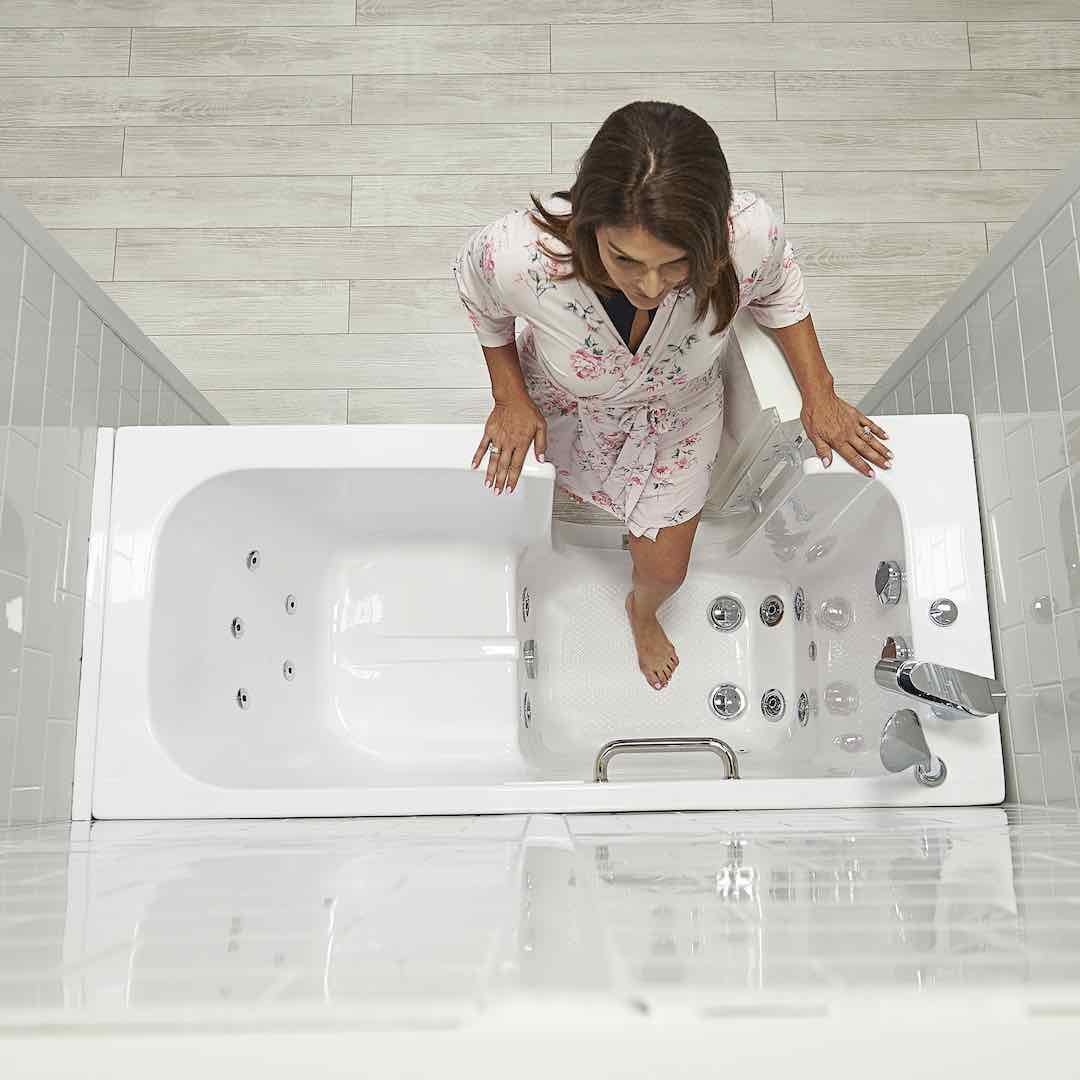The Pros and Cons of Walk-In Tubs for Seniors
Walk-in tubs have gained popularity as a safe and comfortable bathing option for seniors with limited mobility. These specialized bathtubs feature a watertight door and various safety features that make it easier for seniors to enter and exit the tub. While walk-in bathtubs offer several advantages, it's essential to consider the potential drawbacks as well. In this comprehensive guide, we will explore the pros and cons of walk-in tubs, helping seniors make an informed decision about investing in this bathing solution.
Safety and Mobility: Ensuring Peace of Mind
Safety is a primary concern when it comes to bathing for seniors. The low threshold and safety features of walk-in tubs address this concern effectively.
Pros of a Walk-In Tub
Low threshold: Walk-in bathtubs feature a door with a low threshold, eliminating the need to step over the high side of a traditional bathtub. This design significantly reduces the risk of slips and falls.
Built-in seat: The inclusion of a built-in seat allows bathers to sit comfortably while bathing, eliminating the need to lower themselves onto the tub floor. This feature provides stability and reduces strain on joints.
Slip-resistant floors: These tubs are equipped with slip-resistant floors, providing a secure footing when entering and exiting the tub.
Handrails: Walk-in tubs may incorporate integrated handrails to help while sitting and standing, offering additional stability and preventing accidents.
Temperature control: Some walk-in tubs come with anti-scald valves, ensuring the water temperature remains within a safe range to prevent burns.
Emergency call system: Accessible call buttons are installed in many walk-in tubs, allowing bathers to call for medical assistance in case of an emergency.
Accessibility: Many models of walk-in tubs are designed to facilitate easy transfer from wheelchairs to the tub seat, promoting independence and convenience.
Easy cleaning: Walk-in tubs are constructed with materials like fiberglass and acrylic, making them easy to clean with nonabrasive cleaners. Some models even feature self-sanitizing systems to inhibit microbial growth.
Cons of a Walk-In Tub
Inconvenience for helpers: The design of some walk-in tubs can make it challenging for caregivers or family members to assist the elderly with a bath.
Delayed first aid: Unless equipped with a call button and rapid-drain feature, bathers may have to wait for the tub to drain before exiting in the event of a medical emergency.
Risk of flooding: Although walk-in tub doors are water-sealed, there is a possibility of a seal failure leading to leaks or flooding. Additionally, if the door is not latched properly, the weight of the water in the tub could force it open, resulting in water spillage.
Pain Relief: Soothing Aches and Pains
One of the significant benefits of walk-in tubs is their potential to provide pain relief and relaxation through warm water therapy when taking a bath.
Benefits of a Walk-In Tub
Deep relief: Walk-in tubs allow bathers to soak in deeper water compared to traditional tubs, providing enhanced circulation and mobility while relieving pain.
Hydrotherapy: Many walk-in tubs are equipped with water jets unlike standard bathtubs, but similar to those found in outdoor hot tubs. These jets massage tense muscles and joints, offering therapeutic benefits.
Hot tub benefits at home: Unlike outdoor hot tubs, walk-in tubs offer the convenience of being able to use them at any time in the privacy of one's own home. Some models even come with built-in heaters to maintain the water temperature throughout the bath.
Disadvantages of Walk-In Tubs
Long wait times: Bathers must enter the tub before it fills and cannot exit until it is fully drained. This process can be time-consuming and may be inconvenient for those who prefer quick bathing experiences. Many opt for a quick draining solution so they don't have to sit in the tub and wait till it drains.
Risk of chills: Some walk-in tubs aren't equipped with rapid drain and fill technology, and fill and drain slowly, potentially leaving bathers at risk of becoming chilled. However, higher-end models with heated seats and rapid draining features can mitigate this issue.
Economy: The Walk-In Tub Cost Consideration
While walk-in tubs offer numerous benefits, it's essential to consider the associated costs and potential financial implications.
Pros of Walk-In Baths
Payment options: Several walk-in tub vendors provide flexible payment plans, allowing buyers to spread out the cost over time instead of making a single, large payment upfront.
Reduced healthcare costs: The safety and health advantages of walk-in tubs can lead to lower medical expenses, as they help prevent accidents and injuries caused by slips and falls.
Potential increase in property value: Installing a walk-in tub can potentially increase the value of a home, especially if located in a retirement community or an area with a high demand for senior-friendly accommodations.
Combined savings: Some walk-in tub models offer bundled features, allowing buyers to enjoy several beneficial features in a single package.
Cons of a Walk-In Bathtub
Hidden expenses: Advertisements for walk-in tubs often do not disclose the additional costs of a walk-in tub associated with features like quick-fill and drain fixtures, water jets, adjustable showerheads, built-in seating, and temperature controls.
Installation costs: Walk-in tubs require professional installation, and depending on the bathroom layout and specific tub model chosen, structural modifications may be necessary, adding to the overall expense.
Plumbing and electrical upgrades: Some homeowners may need to upgrade their plumbing and electrical systems to accommodate the installation of a walk-in tub, incurring additional costs.
Water heater capacity: Walk-in tubs hold a larger volume of water compared to standard tubs, potentially requiring an increase in the size of the home's water heater. This additional expense should be factored into the overall cost of the walk-in tub.
Is a Walk-In Tub Worth It? Weighing the Advantages and Disadvantages
Deciding whether a walk-in tub is worth the investment depends on individual needs, preferences, and financial considerations. People with limited mobility or those seeking a safer bathroom experience may find the benefits of walk-in tubs to outweigh the potential drawbacks. It's important to research different walk-in tub models, compare costs, and consult with professionals to ensure the chosen tub meets specific needs and preferences.
To make an informed decision, consider factors such as safety, pain relief, and economic implications. The advantages of walk-in tubs, including enhanced safety advantages, pain relief through hydrotherapy, and potential long-term cost savings, may make them a worthwhile investment for the elderly looking to maintain their independence and well-being.
In conclusion, walk-in tubs offer a range of benefits for seniors, but it's crucial to carefully consider both the pros and cons before making a decision. By weighing the safety features, pain relief options, and financial considerations, one can determine if a walk-in tub is the right choice for their bathing needs. As with any significant investment, thorough research, consultation with experts, and understanding personal requirements are key to making an informed decision.





